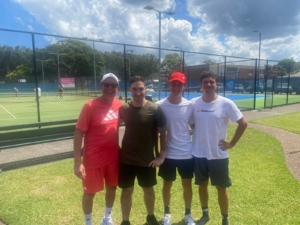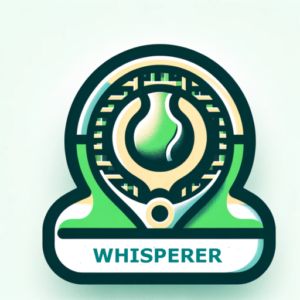Wet and Windy Seniors Forster Tournament – A Celebration of Tennis Togetherness
From the moment players zipped up their bags, the forecast signaled trouble. Flood warnings around Newcastle and statewide travel advisories loomed large. Yet, at Forster, the spirit of tennis—and of community—stood tall against the elements.
Thanks to the tireless leadership of Tournament Director Brian, and the ever-energetic Club Pro Jamie wielding a super soaker like a champion, the tournament found its rhythm against all odds.
Friday – Singles Before the Storm
Despite the looming weather, singles matches crossed the finish line on Friday, with players darting around squalls to complete play before the skies fully opened around 5pm. A brief window, but a vital one.
Saturday – Rain, Rackets, and Random Draws
Saturday brought a fresh round of unpredictability. With official matches cancelled, a spontaneous community playoff took shape. At noon, names were drawn from a hat—giving everyone, from seasoned contenders to sideline legends, an equal chance to win!
A raucous, joyful crowd gathered, fuelled by a beautifully organized lunch courtesy of Julie, Sharon, Angela, and a dedicated crew of FTC volunteers. The courts may have been wet, but the spirit was soaring.
Sunday – Optimism in the Rain
With court playability checks at 7, 9, and 11:30a, Brian remained undeterred. Puddles were squeegeed, courts were prepped, and once again, the community came together for more playful pairings and another stellar canteen lunch.
Tennis resumed briefly after lunch, with two sets played across brackets—before the skies reminded us who was really in charge.
Monday – Sunshine, Sets, and a Spirited Finish
Finally, the rain gave way. Under clearing skies and warm sun, the tournament wrapped up with a gender-age, spirited series of matches. Players young and seasoned hit the courts side by side—proof that the love of the game spans generations.
While a few unfortunate injuries touched the older men’s group, the joy of play and community connection clearly won the day.
In the End, Tennis Was the Winner
Even if many didn’t get to play their scheduled matches, friendships were rekindled, new bonds were formed, and laughter echoed louder than any thunderclap.
Massive thanks go to Brian, Jamie, Julie, Angela, Sharon, and every single volunteer who turned a rain-drenched weekend into a triumph of community, resilience, and togetherness.
Here’s to next year—rain or shine!







